An essential but often overlooked piece of boating equipment are your dock lines. Dock lines keep your boat safe and secure while stationary. It’s essential to check these regularly, or the next time you go to get your boat, it might not be there. Let’s review what you need to know about dock lines.
Types of Dock Lines

There are two main types of dock lines: transient and permanent. Transient lines stay on the boat, and permanent lines stay at the dock. There are also multiple lines with specific purposes within each type.
Transient Lines
Transient lines usually consist of an open end that’s placed over the dock cleat and the bitter end that’s adjusted in the boat. These lines are not cut to fit, and you’ll usually have some excess to account for variances at different docks.
Permanent Lines
Permanent lines can vary depending on your dock’s configuration. Unlike transient lines, these are cut to length and don’t require adjustment.
The other big difference between transient and permanent lines is chafing. Permanent lines are in constant use, so protection from chafing is necessary. If no chafe guards are in place, the ropes will wear down over time, leading to frays and subsequent breaks.
There are several products used to prevent chafing to permanent lines. Some common examples are thimbles, chafe guards, and chafe sleeves. The correct choice for you will come down to your specific setup. A common practice of boaters is to use chains and shackles to attach the dock lines to the cleats, as this prevents chafing and makes for an easy connection.
Spring Lines vs. Bow and Stern Lines
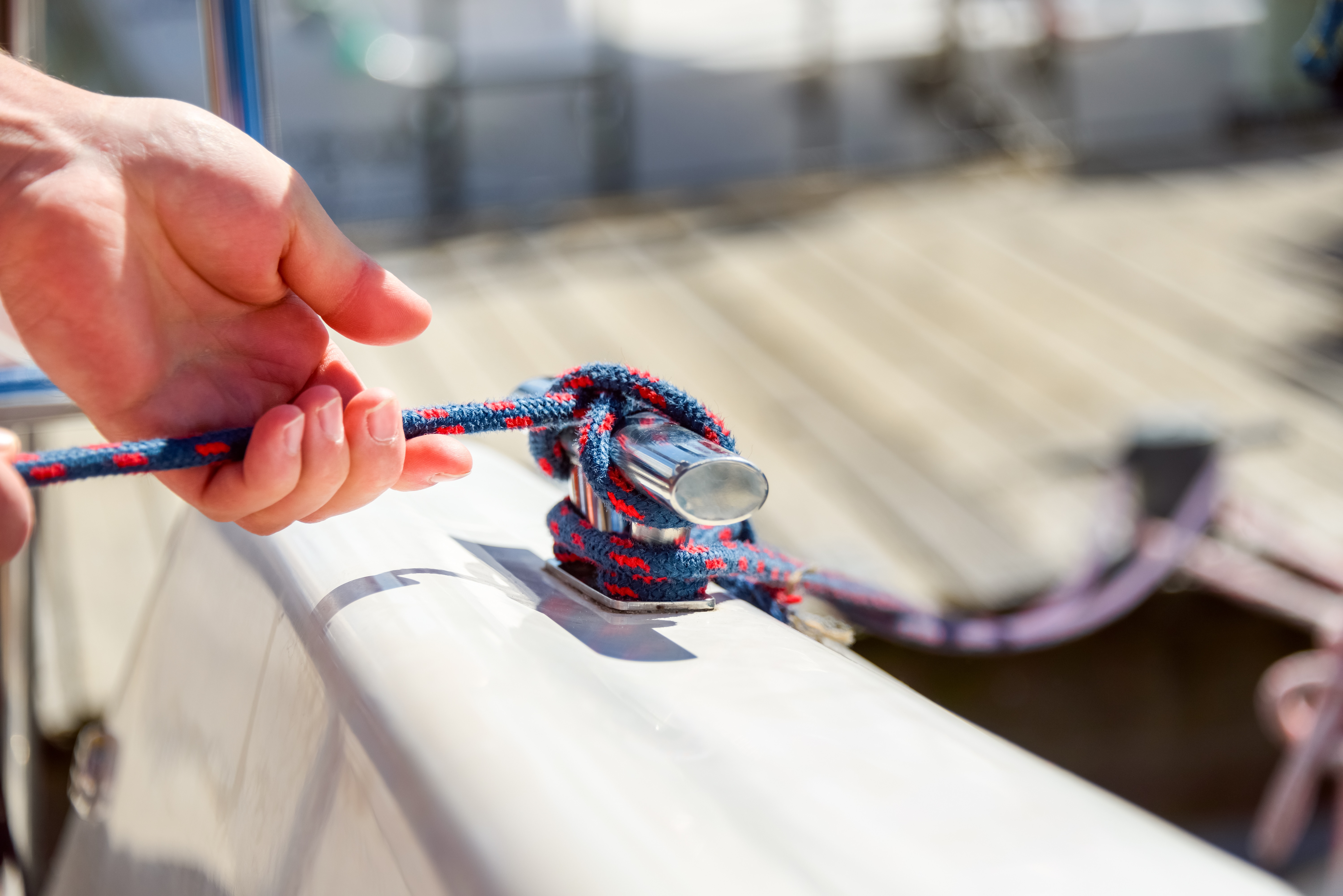
When securing your boat to the dock, you’ll use four total lines: two spring lines, a bow line, and a stern line.
Your bow and stern lines run straight out to the dock. These lines are designed to keep your boat from moving side to side and fore and aft.
Spring lines run to opposite ends of the dock, crossing along the way. They are designed to stop the boat from moving fore and aft.
You may also have a breast line to pull the boat closer to the dock when boarding, but this is not part of securing the boat.
Rope Construction
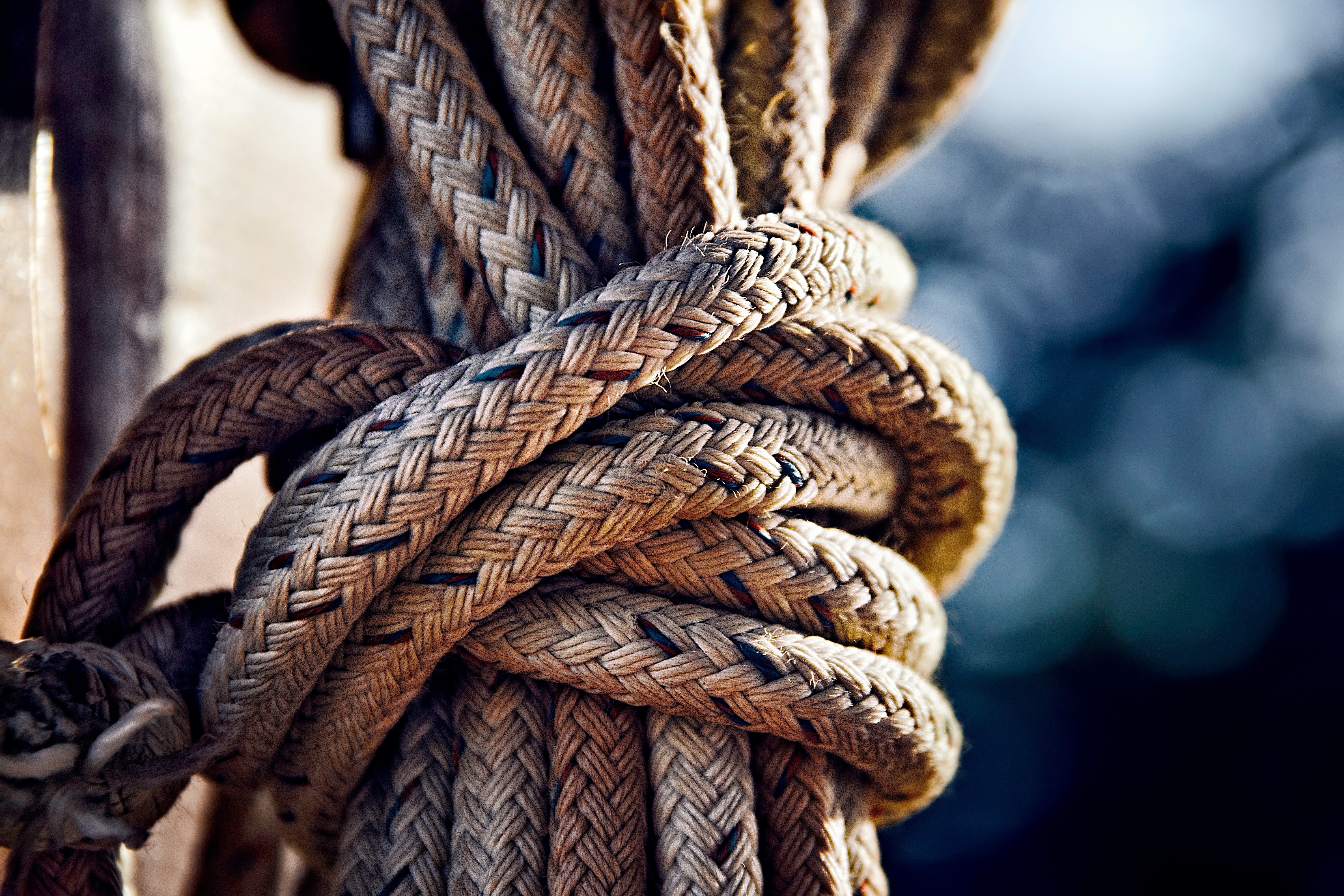
Dock lines normally come in double braid and twisted three-strand. These are both great options, but they have pros and cons.
Double braid is stronger than three-strand. It’s also softer and easier to handle. It won’t harden as it ages, and it looks more aesthetically appealing.
On the other hand, three-strand has more stretch, allowing it to absorb shock better and keep the boat protected. It’s also more economical and easier to splice.
Material
Nearly all dock lines are made of nylon. Nylon is a synthetic fiber that has both excellent stretch and strength properties. It’s also durable and long-lasting, so it won’t break down if adequately cared for. You can store nylon rope wet without worrying about mold or mildew.
Color
There are many color options to choose from for both line types. Most boaters like to match their dock lines to the trim or canvas on their boat, but the color only matters for aesthetics.
Line Splicing
Many dock lines now come pre-spliced on one end, which is great as it takes the burden off you. However, there are still times you may need to learn to do this, like when adding a thimble. It’s not a difficult skill to learn, but the difficulty can vary depending on your line type. Three-strand and double braid can be spliced, but double braid is much harder. When finished splicing, you’ll need rope whipping or a hot knife to seal the end and stop it from unraveling.
Rope Sizing
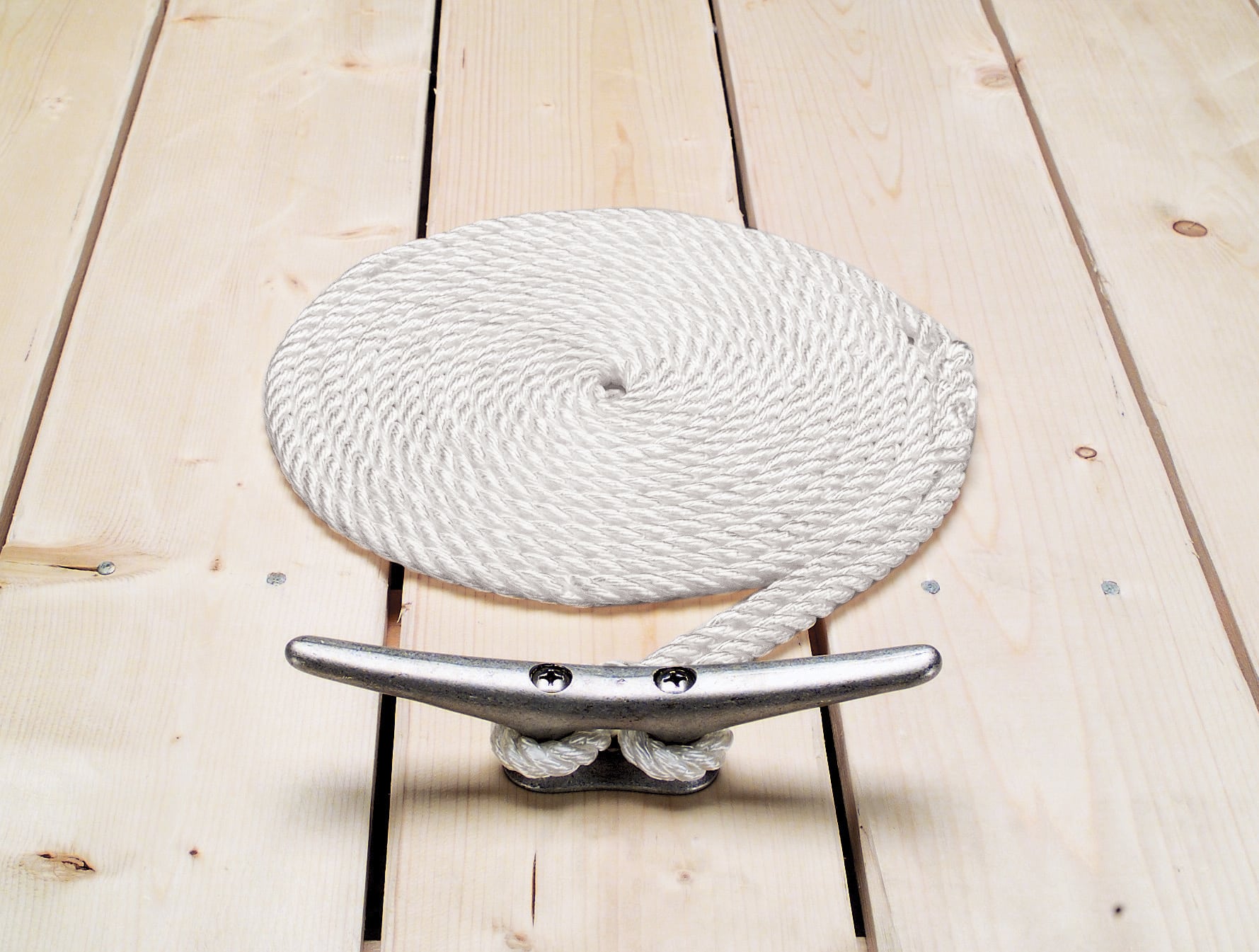
Now that we have discussed the different types and construction of dock lines, we’ll turn our attention to choosing a size.
Diameter
The diameter of a line reflects its strength and subsequent capacity. The best choice for boats under 20′ is 3/8″ diameter. For larger boats, a good rule is to add 1/8″ line diameter for every 9′ of boat length. So for a 20′ to 29′ boat, 1/2″ diameter lines are a good choice.
Length
Choosing the correct dock line length is simple; your transient lines should equal 2/3 of the boat’s overall length, and your spring lines should equal the entire length of the boat.
Dock Line Accessories
In addition to dock lines, you may also need other equipment to secure your boat correctly.
Dock Cleats
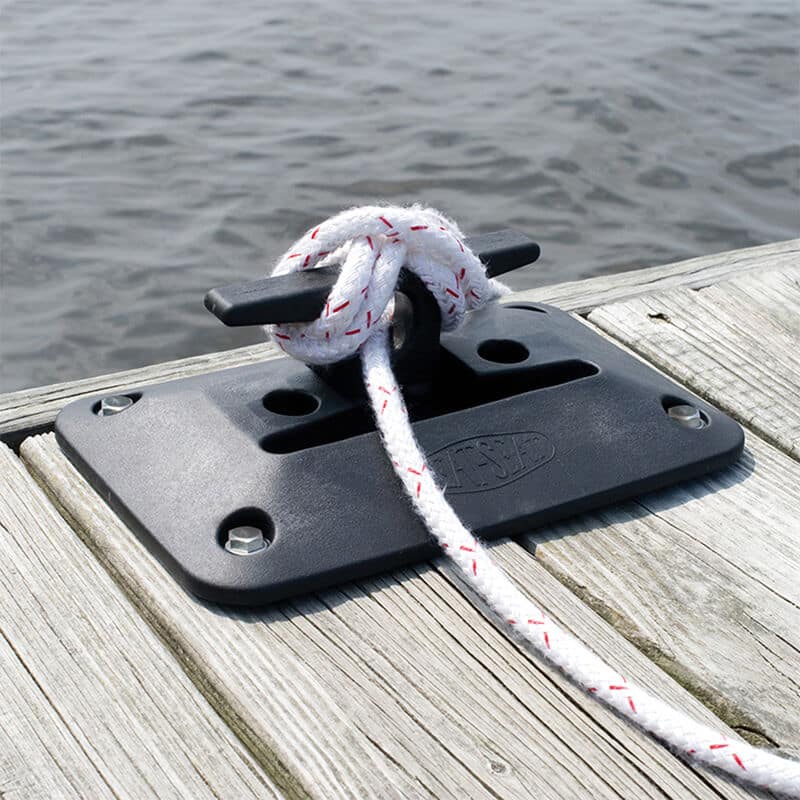
The most common way to tie off a boat is with dock cleats. There are many types of dock cleats, some small, some large, some of which have a collapsible design. Regardless of your choice, you’ll need to ensure they are in good condition and fastened to the deck properly. If not, you run the risk of the cleat failing, which could spell disaster for your boat.
Line Snubbers
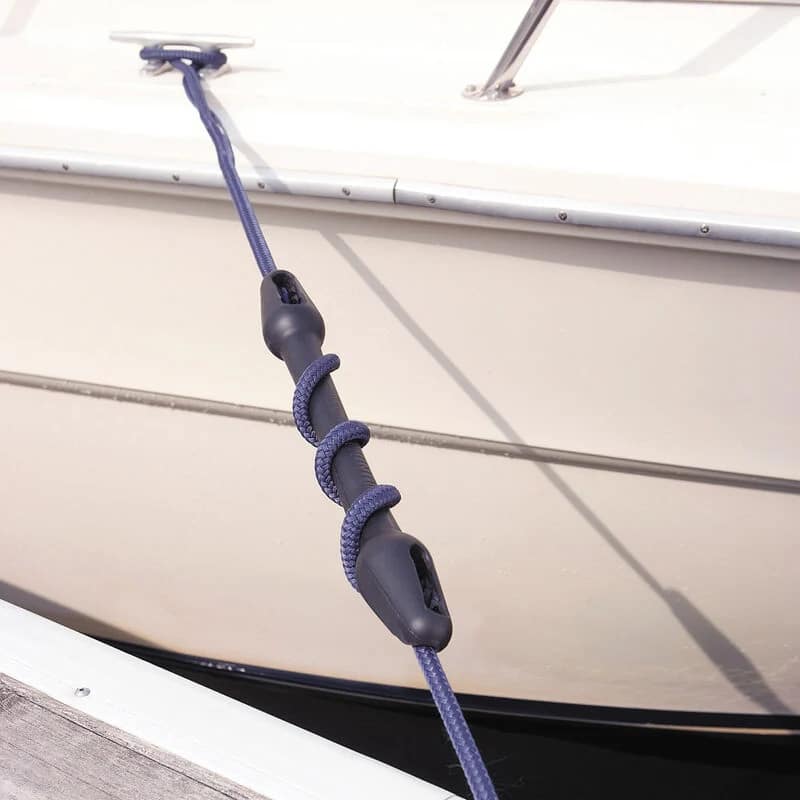
Dock line snubbers are a great option for adding more stretch to your dock lines. Typically, long lines are not an issue, but shorter lines can lack elasticity, causing the boat to jerk and pull. This issue could be amplified if your dock is in an area with strong winds or large wakes. Please note that you must install snubbers before splicing, as you cannot install one once both ends are spliced.
Line Hooks
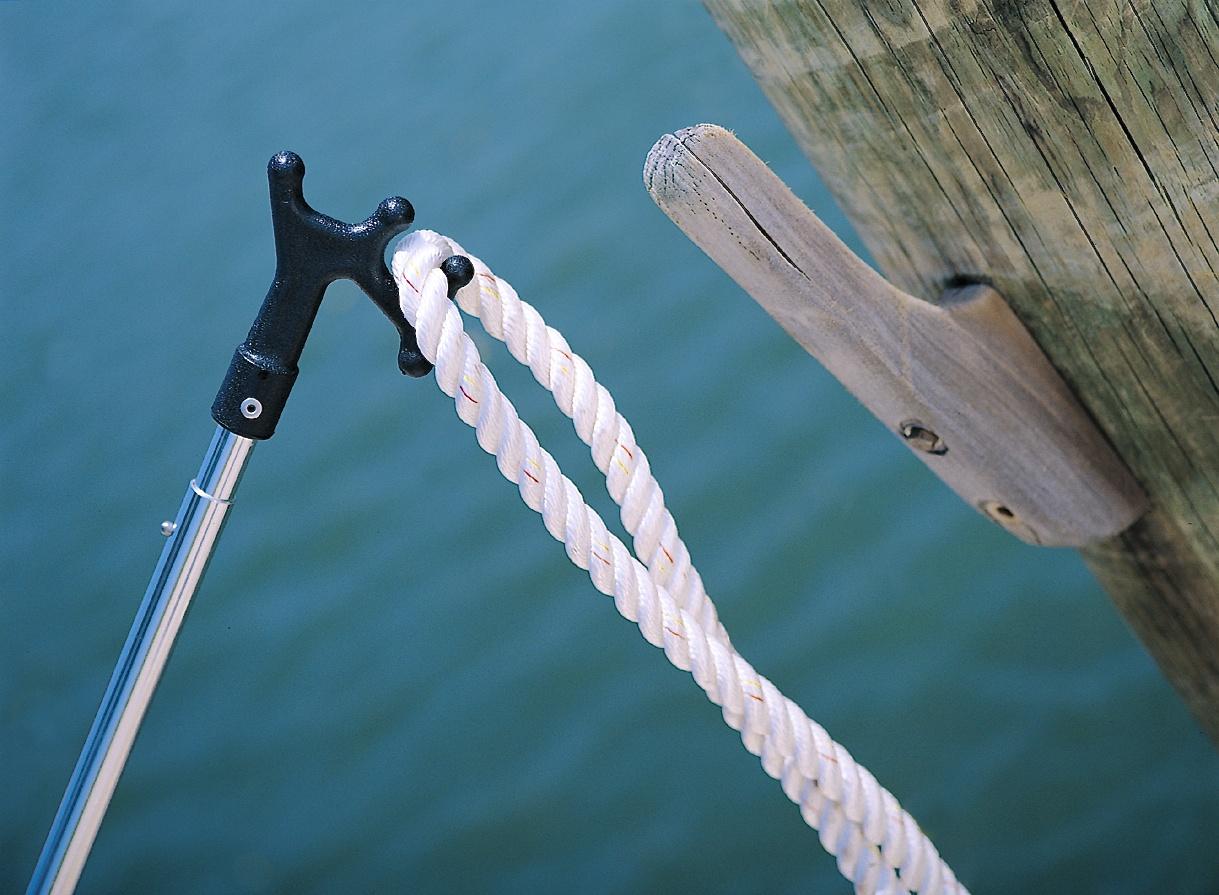
You might want to invest in a line hook if you struggle to reach out over the boat to hook your lines to the cleats. These corrosion-resistant poles have a long adjustable length for every boat and dock combination. The hook end allows you to attach your lines quickly and easily.
Check out some of our other docking and marine articles below:
Overton’s Shopper’s Guide to Dock Edging and Bumpers
Choosing the Right Fenders for Your Boat
Everything You Need to Know About Dock De-Icers
_____________________________________________________________________________
Let us know what type of dock line you use in the comments below!

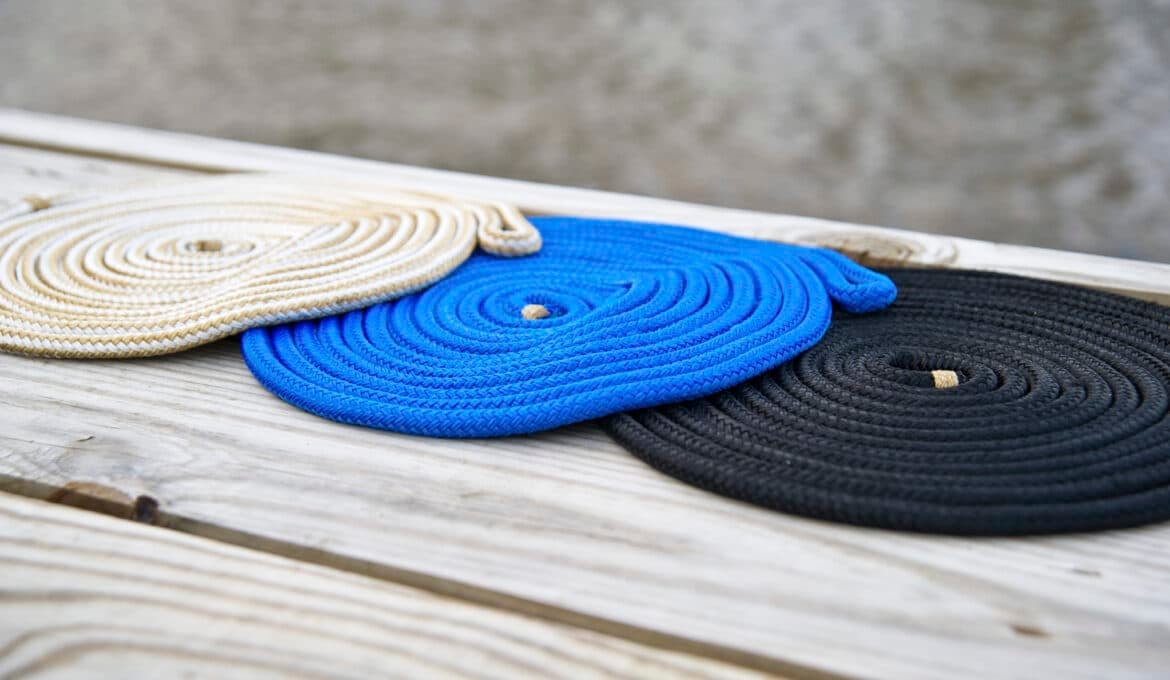



[…] fenders are used each time you tie up. They are important to keep on the boat, so you are protected anywhere you go. Most docks have […]